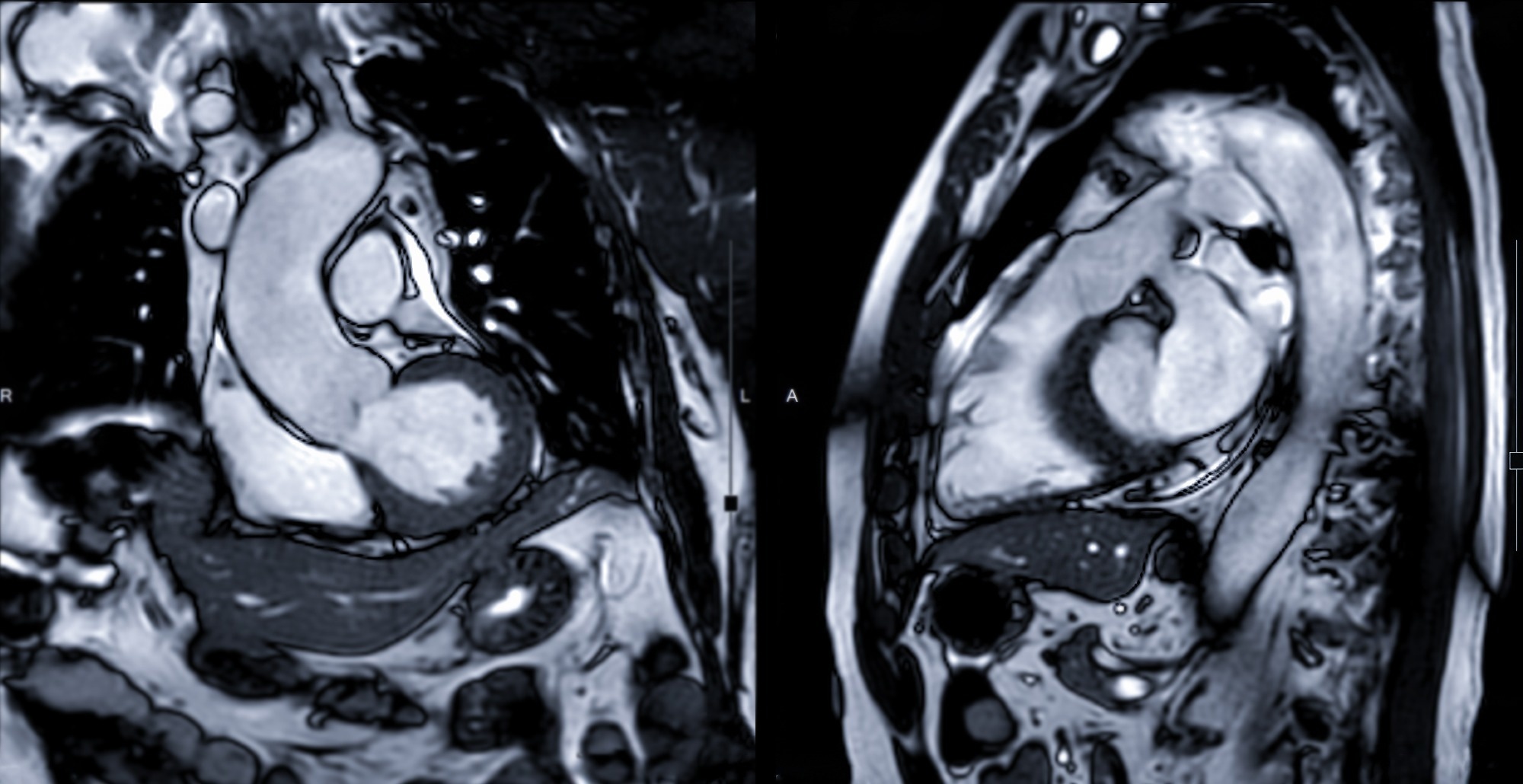In a recent study published in the Journal of Clinical Ultrasound, researchers in Italy reported cardiac magnetic resonance (CMR) findings in individuals with myocarditis-like syndrome during the acute phase of SARS-CoV-2 infection (AMCovS) and post-acute phase (cPACS).
 Study: Cardiac magnetic resonance findings in acute and post-acute COVID-19 patients with suspected myocarditis. Image Credit: Radiological imaging / Shutterstock
Study: Cardiac magnetic resonance findings in acute and post-acute COVID-19 patients with suspected myocarditis. Image Credit: Radiological imaging / Shutterstock
Cardiovascular injury has been frequently observed among SARS-CoV-2-positive individuals since angiotensin-converting enzyme 2 (ACE2) receptors, essential for SARS-CoV-2 entry into the host, are present in the heart. Additionally, indirect coronavirus disease 2019 (COVID-19)-associated mechanisms, including cytokine excess, oxygen demand-supply mismatch, endothelial inflammation, and thrombosis, could result in myocardial inflammation, dysfunction, and ischemia. CMR imaging enables the non-invasive characterization of myocardial alterations.
About the study
In the present retrospective study, researchers reported CMR findings in AMCovS and cPACS patients.
Data were obtained from RT-PCR (reverse transcription-polymerase chain reaction)-confirmed SARS-CoV-2-infected individuals with clinically suspected myocarditis in the acute and post-acute COVID-19 phases, for whom 1.5 Tesla CMR imaging was performed between September 2020 and January 2022. Data were obtained from all patients’ electronic health records, including anthropometric variables, laboratory analysis data, cardiac comorbid conditions, and during SARS-CoV-2 infection for AMCovS and cPACS patients.
Two independent observers analyzed the CMR findings in consensus. Cardiovascular damage was suspected clinically based on (i) symptoms such as chest pain, breathlessness, palpitation, arrhythmias, and dyspnea, (ii) hs-cTnT (high-sensitivity cardiac troponin T) level increase not meeting the criteria of myocardial infarction diagnosis, and (iii) abnormal electrocardiography (ECG) and/or echocardiography findings not suggestive of myocardial infarction.
Cine-SSFP (cine steady-state free precession) images were analyzed for assessing wall motion alterations and cardiac chambers’ function and volumes. STIR (short-tau inversion-recovery) and T2 images were analyzed to assess the extent of edema, and LGE (late gadolinium enhancement) images were analyzed for myocardial scar identification. Native T1 and post-contrast T1 images were analyzed to assess the extracellular volume fraction. The type and extent of cardiovascular alterations in the CMR images were reported.
Results
The study sample comprised 39 patients (17 and 22 AMCovS and cPACS patients, respectively), 62% (n=24) male. AMCovS patients were predominantly male (59%, n=10), the median patient age was 57.0 years, and had elevated hs-cTnT levels (median peak at 122 ng/L) related to acute pain in the chest (71%, n=12) with ST-T segment alterations (53%, n=9). Most patients (76%) had ≥1 comorbidity. Among AMCovS patients, 35% were intensive care unit (ICU)-admitted due to cardiogenic shock associated with ARDS (acute respiratory distress syndrome), or mild pneumonia.
In AMCovS patients, left ventricular (LV) systolic functioning was normal in 88% (n=15) of patients (LV-ejection fraction (EF) of 65%), and the median LV volume index values were normal. The right ventricular (RV) systolic functioning was normal in 94% (n=16) cases [right ventricular (RV)-EF of 63%), with normal values for the RV volume indices, except in one ICU-admitted patient with mild RV dilation (RV-end diastolic volume index (EDVi) value of 97.0 ml per square meter) and moderate RV systolic derangement (RV-EF of 40%) with LGE and diffuse-type edema of RV free wall, indicative of myocarditis. Histopathological examination yielded a diagnosis of necrotizing myocarditis for the patient.
Over 52% (n=9) of individuals showed myocarditis diagnosis criteria and focal-type edema in 78% (n=7) of patients, involving mainly the inferior part of the middle-basal wall and septum (67%, n=5). T2 images of all patients showed elevated values of 55 ms. In addition, all individuals (except for one patient) showed non-ischemic LGE involving the inferior wall and the septum (63%, n=5), with a minor scar burden affecting 1.0% of myocardial mass. In 24% (n=4) of patients, focal-type edema with ischemic LGE was observed in four myocardial segments, indicative of acute myocardial infarctions.
In the cPACS group, 22 individuals (64% male, median patient age was 38 years) underwent CMR imaging due to persistent cardiac symptoms such as dyspnea (45%, n=10) and recurring pain in the chest (55%, n=12). Ten individuals had a prior history of COVID-19-associated hospitalization with increased hs-cTnT levels among seven individuals (median peak at 238 ng/L) without any history of obstructive-type CAD (coronary artery disease). Over 58% of patients had ventricular arrhythmia. Other changes included wall motion alterations and ventricle dysfunction.
Among cPACS patients, CMR findings included active-type myocarditis, healed myocarditis, and pericarditis for 36% (n=8), 14% (n=3), and 9.0% (n=2) of patients, respectively. Over 26% (n=6) of patients were diagnosed with miscellaneous cardiomyopathies such as dilated cardiomyopathy (DCM), prolapse of the mitral valve with arrhythmogenic features, and myocardial non-compaction in three, two, and one patients, respectively. CMR findings were normal for three patients.
Six individuals with active-type myocarditis showed focal edema involving two segments, with greater T2 values of 55 ms. Non-ischemic LGE patterns were observed in the mid-basal wall on the lateral aspect (63% of cases, n=5) involving two myocardial segments with a 2.0% scar burden. The three individuals with healed myocarditis showed no edema, LGE in four inferior and lateral wall segments, and T2 values within the normal range.
Overall, the study findings showed that among individuals experiencing myocarditis-like symptoms in the acute and post-acute phases of COVID-19, CMR imaging enabled the non-invasive characterization of ischemic and non-ischemic cardiac damage and unraveled cardiomyopathies. Thus, the technique must be incorporated into the diagnostic workup of COVID-19 patients to enable personalized and advanced patient care and decrease the health burden of SARS-CoV-2 infections.